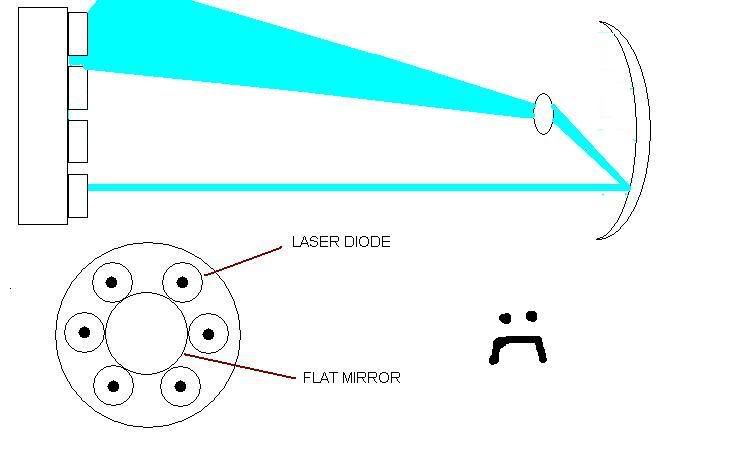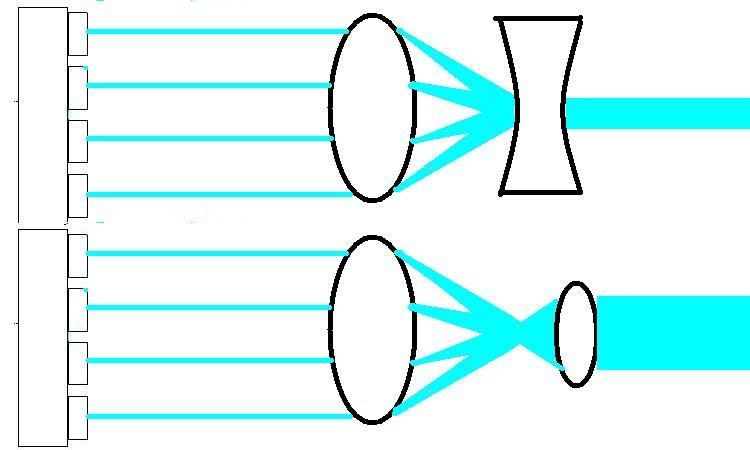I posted over in the Tutorials, Help & Repairs... and got no responses.... so I was going to post here and see if you guys can help, it is mostly an optics question.
Still looking at using multiple LDs but I don't want to culminate them now. I want a wide bright beam. Would I be best to use 2 lens to get a solid beam or use a diffuser on each diode and then combine the diffused beams into a solid one?
If I want to use the 2 lens option, has anyone tried a concave mirror? If the mirror is uniform, and the diodes set in a ring, then they should all reflect into a single point in front of the mirror. I should then be able to get by just using a single diffusing lens to produce the beam? (image below)
This should create a closed circuit and trap the light, correct?
Still looking at using multiple LDs but I don't want to culminate them now. I want a wide bright beam. Would I be best to use 2 lens to get a solid beam or use a diffuser on each diode and then combine the diffused beams into a solid one?
If I want to use the 2 lens option, has anyone tried a concave mirror? If the mirror is uniform, and the diodes set in a ring, then they should all reflect into a single point in front of the mirror. I should then be able to get by just using a single diffusing lens to produce the beam? (image below)
This should create a closed circuit and trap the light, correct?






